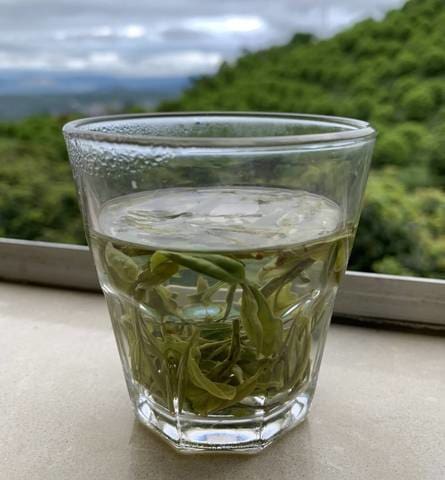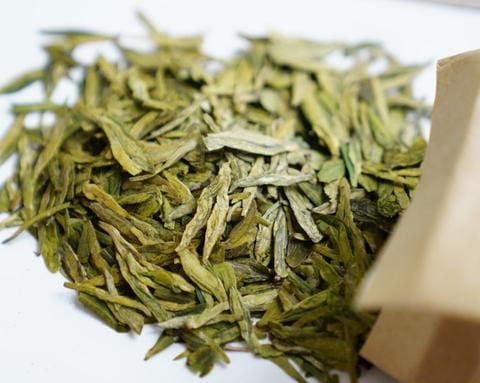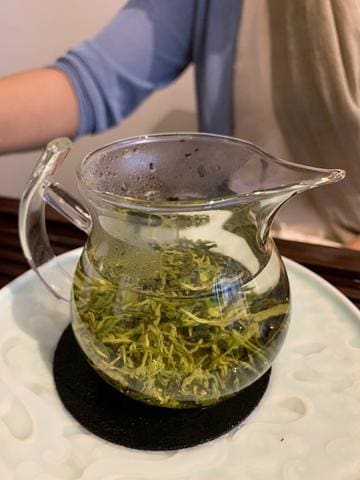
What Makes for a Good Green Tea?
Have you ever wondered what exactly makes for a good green tea?

With so many options on the market, how can you tell which is better than which? Is it all a matter of opinion? Are green teas supposed to taste grassy? Bitter? Astringent?
Contrary to popular belief, green teas vary wildly in aroma and flavor, and three of the biggest factors that determine these qualities are terroir, chlorophyll content, and infusion method. We’ll consider each of these by working our way backwards.
Green teas are one of the more delicate teas that you can purchase. Its polyphenols and antioxidants can usually be reliably extracted in water at lower temperatures than other tea types.
Researchers in Turkey,1 for example, discovered that — a promising phytochemical found in tea that is widely researched. Interesting, ECGC levels dropped as the brewing temperature increased (largely owed to changes in the chemical from the hotter temperature). They then had a panel of professional tasters sample the green tea brewed at the different temperatures and lengths of time, concluding that 85°C was, indeed, optimal for the palate if you intend to brew a single cup.
Such research only backs traditional tried-and-true advice for optimizing your cup of green tea.
If your tea tastes too bitter or grassy, either lower the brewing temperature or decrease the infusion time. Likewise, if it tastes too weak, either raise the brewing temperature or increase the infusion time (although a 3rd possibility is to reevaluate your water for mineral content).

Regardless of how you infuse your tea though, one thing that does affect its taste is the chlorophyll content, and this is largely influenced by how the tea was processed.
In Japan, for example, it is customary to cover some of the green teas, which is why they are referred to as “shade-grown.” Using a cloth or a net, the green tea will be hidden from direct sunlight from 20–30 days, overproducing chlorophyll and turning a dark, rich green.
Thus, it is chlorophyll that contributes to the grassy flavor of any green tea, and the darker it is, the more likely it is to have this flavor. This is wholly determined by sunlight exposure, whether natural or artificial.
However, trying to judge the chlorophyll content of green tea by looking at the dry leaves is a mistake, for the color of the dry leaves is a result of the processing method used. Instead, you’d want to consider the greenness of the leaves while they’re still growing, something that isn’t easy to do as a casual shopper.
We know this because there are some green teas whose dry leaves are very dark but they lack a prominent grassy flavor. In particular, one of our favorites is the Chinese green tea, En Shi Jade Dew Green Tea.

Whereas most green teas are pan-fired, En Shi is unique in that it is steamed, and while it shares in the rich, brothiness of a Gyokuro, there’s a pleasant floral note to it since it isn’t shade-grown. It’s an exciting, tasty green tea whose flavors are unexpected given the dark green appearance of the dry leaves.
In addition to En Shi’s brothy, floral notes, there’s also a minerality to the flavor, thanks to naturally high levels of the mineral selenium in the plant. It is this precisely this flavor that points us to the 3rd component of green tea taste: terroir. The soil in which En Shi grows is rich in this mineral, unique to this area. Two teas, no matter how similar they look, can have completely different qualities all because of the chemical content of the soil and other growing conditions.
For this reason, if you find a tea that you like, take note of where it is grown! It just might turn out that your favorite sensory qualities come from the land, wildlife, and sky rather than the particular species of plant or type of tea. No two dragonwell green teas will taste the same if they’re grown in different areas, and the same is true for the rest of our teas.
Spring Harvest marks a great occasion to sample green teas and start taking note of your favorite regions and styles!
1 Saklar, Sena et al. (2015), “Effects of different brewing conditions on catechin content and sensory acceptance in Turkish green tea infusions,” Journal of Food, Science, and Technology 52(10): 6639–46.
